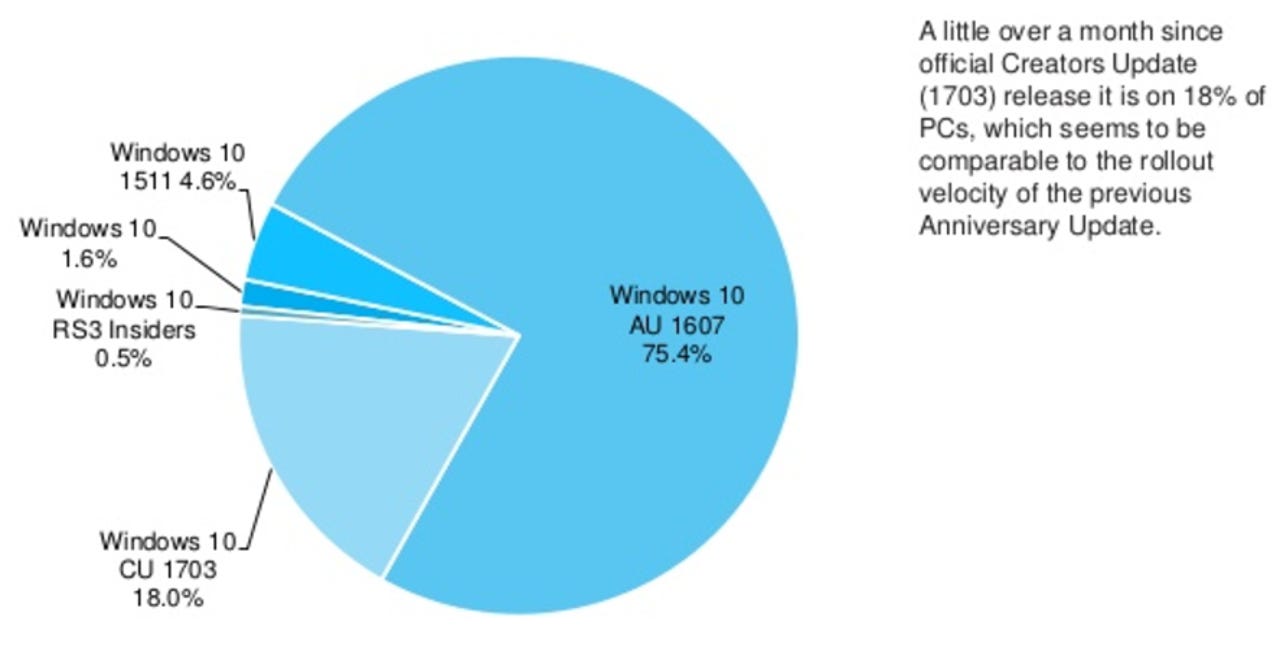Windows 10 Creators Update rollout on track, says Microsoft


The Creators Update is now on 18 percent of Windows 10 machines, matching the Anniversary Update's rollout rate, according to AdDuplex.
Microsoft has offered a vague status report on the progress of the Windows 10 Creators Update, which kicked off on April 11. Microsoft says the rollout underwent its first "major expansion" in May, along with the monthly quality update that fixed the Bluetooth connection issues after installing the Creators Update.
The update is rolling out in phases across the world, starting with newer devices before hitting older ones that haven't been tested directly with OEMs. It's expected to take several months until all 500 million Widows 10 devices are updated, as well as eligible devices still running Windows 7.
According to Microsoft's John Cable "things are going well" with the Creators Update and so it's coming to "tens of millions" more devices.
"We ensure things look good with the current population before we offer the update to even more devices. Based on the feedback we've heard and improvements we've made, we've been steadily expanding the rollout, making the Windows 10 Creators Update available to tens of millions more devices, including eligible Windows Phones," he notes.
The Windows Phone rollout commenced on April 24 for a total of 11 models, including the HP Elite x3, supported Lumia devices and others.
Figures from Windows-focused ad analytics firm AdDuplex show the Creators Update has reached 18 percent of Windows 10 computers. About three-quarters remain on the Anniversary Update.
As it continues, Microsoft is encouraging customers to provide feedback and assures Windows 10 users that it is listening. The best way to ensure feedback is heard is via Microsoft's Feedback Hub application, which collects device diagnostic data and sends it Microsoft's engineering teams, the company says.
To enable the app's diagnostics capability, users need to dial up privacy settings to Full. The app was originally for Windows Insiders but was expanded to all Windows users last year.
Cable also detailed Microsoft's system for deciding what issues to target first. This is called CLIP, or the Customer Listening and Improvement Program.
"We employ the CLIP forum to share what we're hearing, identify top issues, and work together on delivering solutions as quickly as possible," said Cable.
The process includes assigning owners to specific bugs and sometimes deciding to withhold the update for certain devices if it's known to cause issues. It did just that before resolving the Bluetooth issue.